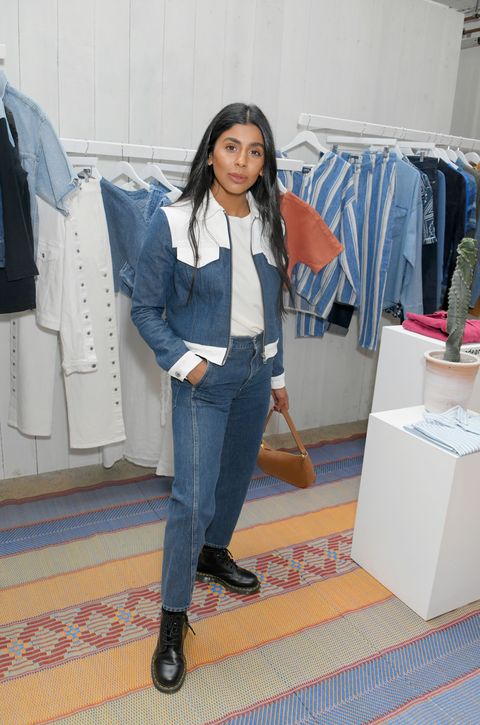Allegra Shaw remembers a time, three or four years ago, when packages from brands—clothes and beauty products sent in the hope that Shaw, a YouTuber with nearly a million followers, would dedicate a video to them—came equipped with confetti explosions and television screens. “When you get a TV in a package, how do you dispose of it?” Shaw says. As conversations around the climate crisis and ethical consumerism reach critical mass, she is one of many influencers rethinking a system that requires them to wear, share, and promote the latest trends at a breakneck pace.
Fashion is a notoriously wasteful industry: Nearly 9,000 tons of solid waste generated from the production of clothing and footwear was sent to landfills in 2017, according to the EPA. Still, attitudes are changing. Burberry and Gabriela Hearst produced carbon-neutral spring 2020 shows, while Gucci announced last fall that it is carbon-neutral across all its operations. Luxury giants LVMH and Kering have unveiled detailed sustainability plans. Meanwhile, some shoppers have begun to turn away from fast fashion—which caused clothing production to nearly double over the past 15 years—and toward resale or eco-conscious labels like Reformation and Everlane.
Because the nature of the influencer economy is inherently unsustainable—influencers’ livelihoods depend on promoting what’s next and newest, encouraging followers to consume right along with them—sustainability arguably goes against the job description. But while some influencers race to keep up with fashion’s hunger for more, others are aiming to change the narrative. Reese Blutstein of Double3xposure opts for vintage and repeat outfits, and she’s said her goal is to “show people that they don’t need an endless supply of clothes or money to have style. The idea that you always need to have new items of clothing is just not realistic for most people, and not sustainable.” Leandra M. Cohen, founder of Man Repeller, grappled with how ethical consumerism is hardly black-and-white in an essay on her site: “I don’t think consumption has to be so dirty if we’re more thoughtful about it and hold ourselves accountable for making! smarter! choices!” she wrote, advocating for more mindful shopping and urging readers to ask themselves if a piece will elevate their wardrobe or if it will make getting dressed in the morning easier.
Knowing that certain brands are taking strides to minimize waste and carbon emissions, New York City–based holistic nutritionist and artist Bianca Valle, who has partnered with Outdoor Voices and Nike—brands that have made public promises to limit their environmental impact—uses her platform to promote labels that are making an effort. “Are they [all] 100 percent sustainable?” the 25-year-old says. “Maybe not. Are they working hard to figure it out? Probably. It’s this notion of not condemning anything or anyone, because I think, as a whole, we know there’s an issue, so people are taking steps.”
Monikh Dale, an influencer and stylist who lives in London, says that since turning 30, “I’m a lot more wary of what I buy.” She uses the eco-conscious movement as an opportunity to ease the tension between aspiration and sustainability, encouraging her followers to invest in high-quality pieces meant to withstand the wear and tear of near-everyday use. “The best comment I can get on my Instagram,” she says, “is when someone says to me, ‘God, I’m bored of those shoes you’re wearing.’ ”
This article appears in the April 2020 issue of ELLE.



